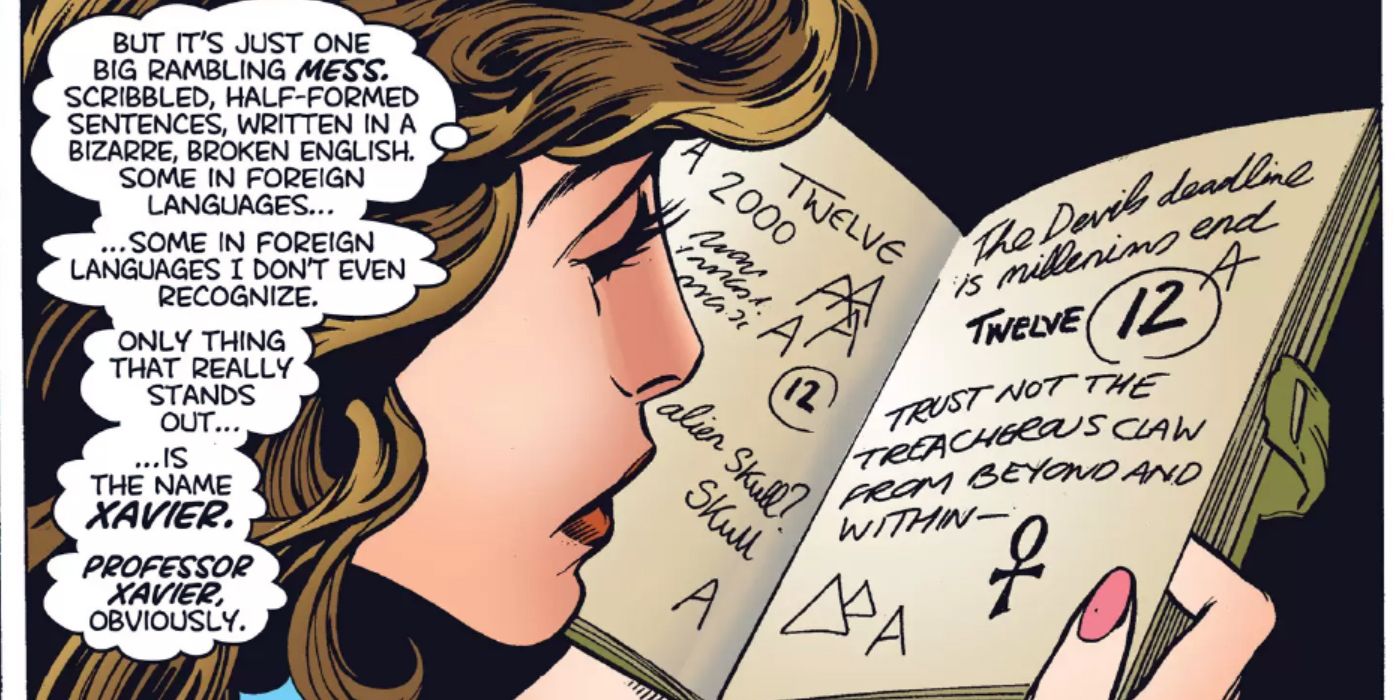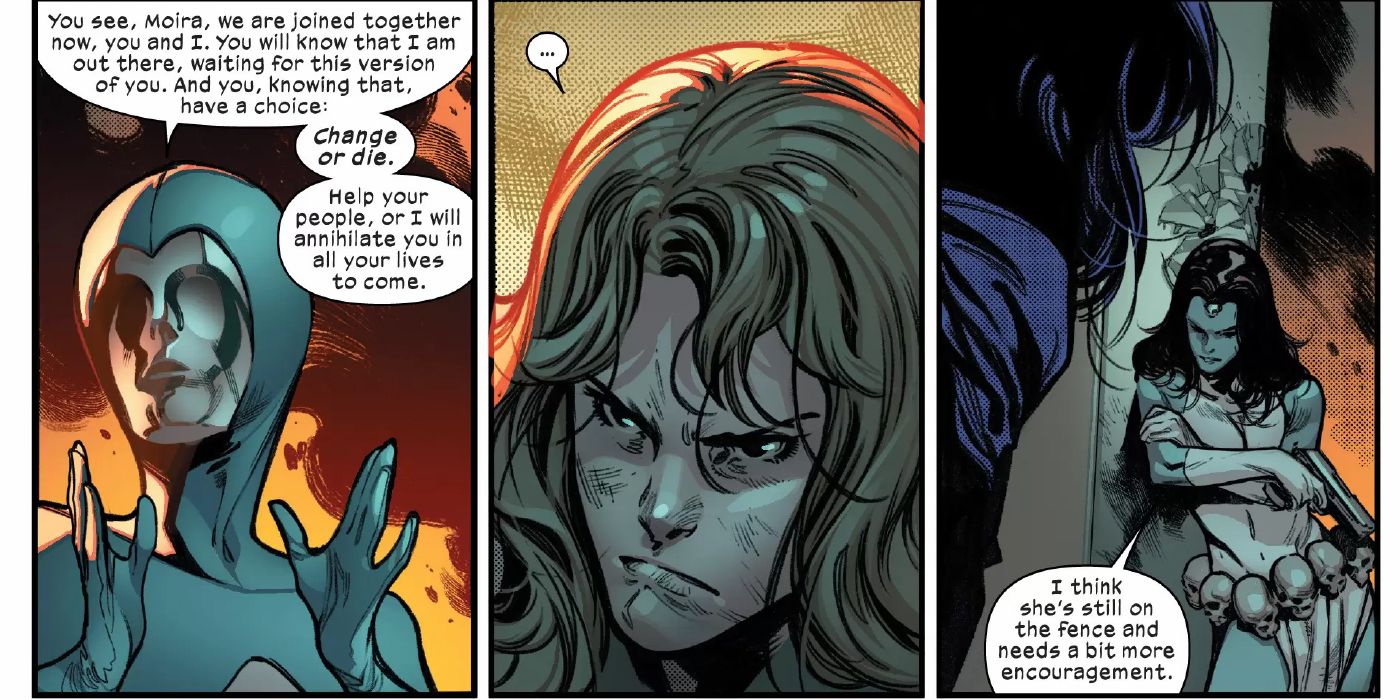
Warning: This article contains spoilers for House of X #2-3 by Jonathan Hickman, Pepe Larraz, Marte Gracia, VC's Clayton Cowles and Tom Muller, on sale now.
The 1990s were a good time for the X-Men, who went from fan favorites to legitimate pop-culture superstars, thanks to record-breaking comic book sales, X-Men: The Animated Series, and the countless toys and video games they spawned.
While the X-Men's '90s success culminated in their cinematic debut in 2000, the decade wasn't entirely kind to Marvel's mutants. While the comics remained a dominant sales force, the X-Men were saddled with shifting creative teams, editorial mandates and continuity-heavy stories that left promising ideas only partially explored, especially in the late '90s.
In addition to fundamentally reshaping the X-Men's world, history and place in the Marvel Universe, House of X and Powers of X have taken some of those ideas and pushed them to their natural conclusions. In doing this, House of X has added new depth to an era of X-Men history that was often written off.
In the 1997 crossover "Operation: Zero Tolerance," the U.S. government and Bastion, a mystical fusion of two powerful Sentinels, try to capture every mutant in the country. To accomplish their goal, they turn unsuspecting humans into Prime Sentinels and Omega Sentinels by infecting them with nanotechnology and releasing them into the world as sleeper agents.

After Bastion and his forces were defeated, the Omega Prime Sentinels disappeared. One Omega Sentinel, Karima Shapandar, even joined a few X-Men teams in the 2000s, and struggled against her programming. While a small group of Omega Sentinels reappeared in 2015, they were seemingly just another minor threat on the X-Men's long list of enemies.
However, House of X gives the Omega Sentinels a much more pivotal role in mutant history. As a data page in House of X #3 reveals, the Omega Sentinels are the missing technological link between giant Sentinels like Master Mold and Nimrod, the ultimate threat to mutantkind.
The Omega Sentinels were always sleeper agents, and it's fitting that they lurked unnoticed in the background for years before their true importance began to become apparent. Project Orchis, an anti-mutant organization comprised of human scientists, even rebuilt and recruited Karima as their resident Omega Sentinel.
To prevent the construction of Nimrod, the X-Men begin staging an attack on Orchis' orbital space station in House of X #3. While scouting ahead, Nightcrawler encounters Karima and trades words with his former teammate. When Orchis agents start coldly discussing the X-Man, Karima quietly points out that his name is Nightcrawler.
Like many of the Omega Sentinels, Karima's transformation into a mutant-hunting machine was a horrific, tragic event that tore apart her relationship with the X-Men's Thunderbird III. House of X hints that at least part of her humanity is still there, suggesting she still may be struggling internally.
Of course, the X-Men only know about Orchis and the imminent creation of Nimrod thanks to the memories of a reincarnated Moira MacTaggert, who has knowledge from her previous lives about the X-Men's possible futures. While Moria's memories have completely redefined X-Men history, it also seems like an updated take on another plotline from the late '90s, the search for Destiny's diaries.

Although the future-telling villain Destiny was killed in the late '80s, she recorded her obtuse predictions for mutantkind in a journal that Kitty Pryde found in 1999's X-Men #94, by Alan Davis and Terry Kavanagh. In what seems like a retroactive tease for House of X, the journal even contains strange languages that Kitty doesn't recognize; those could very well be Krakoan, House of X's new mutant language.
While most of Destiny's predictions teased upcoming storylines and the year 2000, she supposedly wrote years of Nostradamus-esque prognostications in her diaries. Although the X-Treme X-Men series was ostensibly about the search for those books, Gambit destroyed the diaries in 2007 during a battle between the X-Men and the Marauders, years after they were last mentioned.
That story was about the ultimately futile search for Destiny's diaries, but House of X could've easily taken place in a world in which the X-Men found those books and acted on the knowledge contained within.

House of X #2 even makes explicit this loose connection between Destiny and Moira's reincarnations. When Moira tries to develop a "cure" for mutants in her third life, Destiny and the Brotherhood of Evil Mutants hunt down and execute her. While threatening to kill Moira in her next life, Destiny compelled her to use her knowledge to save mutantkind.
That moment gave Moira the impetus to tell Charles Xavier and Magneto about her memories in the X-Men's early days, and it explains Xavier's radical plan for mutantkind now. With advance warning of every possible enemy and every potential defeat in their future, the X-Men have been re-formed into a militarized unit that represents mutantkind's best chance at survival.
Even though the search for Destiny's diaries and "Operation: Zero Tolerance" aren't high points in X-Men history, House of X confirms their place in the grand design of the X-Men's world by embracing some of their ideas. By building on these disregarded parts of the X-Men's past, House of X is laying a solid foundation for the X-Men's future.
Add Comments